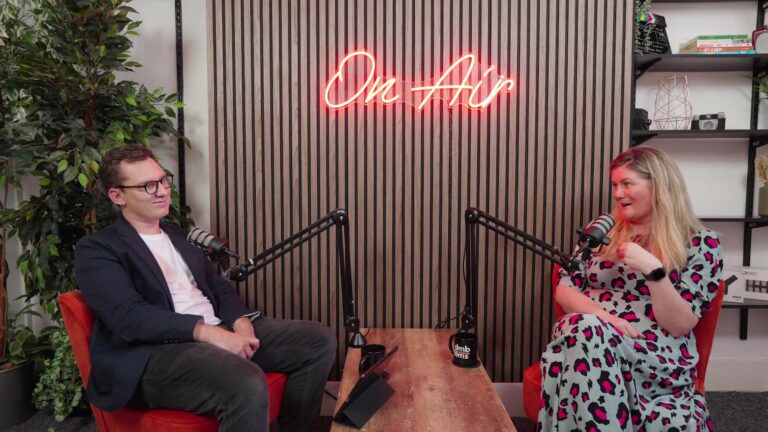Building EDI from the ground up
Inclusion isn’t just a policy or a campaign – it’s a lived experience.
In this episode of Reel Impact, Cat Lynch, Community Stakeholder Manager at KeolisAmey Docklands, joins host Dan to talk about what equity, diversity and inclusion (EDI) really look like when you take them beyond the workplace and into the heart of a community.
Together they explore how genuine inclusion is built, not from corporate initiatives or one-off campaigns, but through everyday actions that bring people together.
The power of listening
Cat has spent her career working with a wide mix of people – from businesses and charities to local groups and volunteers – all driven by a shared purpose: helping others feel seen, valued and part of something meaningful.
She explains that real inclusion doesn’t start with a strategy or a policy. It starts with listening.
“You can’t design inclusion from behind a desk,” she says. “You have to listen to people’s stories — the real ones — and understand what belonging looks like for them.”
In her community work, that means showing up at events, spending time in shared spaces, and asking questions that go deeper than demographics. The conversations might start around access to local services, but they often open up to much broader topics: confidence, opportunity, even identity.
EDI beyond the office walls
For many organisations, EDI is still seen as something that lives in HR or internal comms. But Cat believes it has far greater potential when it reaches beyond the workplace.
“When you get businesses, charities and community groups working together, you see inclusion in action,” she explains. “People start to recognise that everyone has a role to play, whether it’s giving time, offering space or simply amplifying someone else’s voice.”
That collaboration helps bridge divides between sectors that might otherwise never meet. For example, a local employer offering mentoring to young people from underrepresented backgrounds doesn’t just tick a CSR box – it builds real confidence and connection within the community.
Small actions, lasting impact
Cat and Dan discuss how some of the biggest changes often come from the smallest, most human gestures – a conversation over coffee, a simple “how are you?” or an act of allyship that makes someone feel seen.
“You don’t have to be an expert to make a difference,” Cat says. “Just be open, curious and willing to learn from others.”
She shares how community-led EDI work has shaped her approach to leadership, reminding her that people engage most when they feel safe to be themselves.
The lessons apply just as much in the boardroom as in the community centre: consistency, empathy and trust matter more than perfection.
Challenging assumptions
Throughout the episode, Cat and Dan reflect on the subtle barriers that can hold people back, from unconscious bias to the fear of saying the wrong thing.
Cat encourages leaders to approach these moments with humility rather than hesitation.
“It’s okay to get it wrong,” she says. “What matters is what you do next — whether you apologise, learn and do better. Inclusion is a journey, not a tick box.”
This mindset, she argues, helps shift EDI from a compliance issue to a culture of curiosity and one where people feel empowered to ask, understand and evolve together.
From community to culture
Cat’s experience shows that the principles that drive successful community work – openness, collaboration and empathy – can also transform workplace culture.
“So much of what we call ‘workplace culture’ starts outside the workplace,” she says. “If we can build stronger communities, we can build stronger teams.”
The message is clear: inclusion isn’t something you roll out. It’s something you nurture; one conversation, one relationship, one shared experience at a time.
🎧 Listen to the full episode of Reel Impact with Cat Lynch wherever you get your podcasts.
About Reel Impact
Reel Impact is the podcast from dmb films that shines a light on the stories, challenges and conversations shaping how organisations connect with people.
